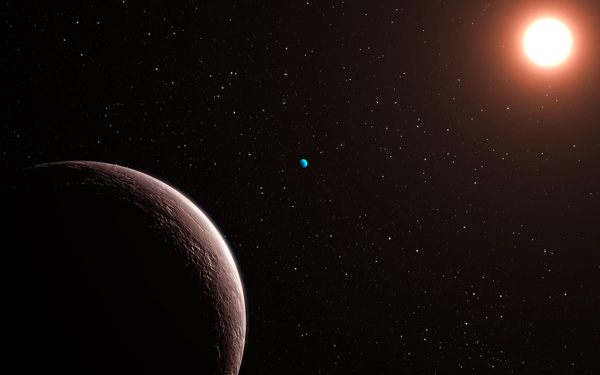Radial velocity method in astronomy – Echelle spectroscopy
In the astronomical field, spectroscopy methods play an important role next to imaging methods. In this article, we present a well-established method to determine radial velocity: Echelle spectroscopy.
Separating the light of a star into its optical spectrum also provides information on its velocity relative to the observer. Due to the Doppler effect, the redshift for example indicates a movement away from us, while a blueshift hints at a movement towards earth. The spectra of a star during different times (of the year) disclose information on the periodic changes of the spectrum and as such can proof the existence of binary star systems. They are mostly not resolvable with direct imaging methods. Furthermore, it has been possible to proof the existence of extrasolar planets with help of this indirect method. This is particularly challenging as the typical planet-to-star mass ratio is large and the mutual center of gravity lies almost in the center of the star. One of the lightest exoplanets is Gliese 581e with 1.7 times the mass of the earth (fig. 1). It was detected with this method using the ‘High Accuracy Radial velocity Planet Searcher‘ (HARPS), an Echelle spectrograph at the 3.6 m telescope of the European Southern Observatory (ESO). The Gliese 581 system is about 20.4 light years away. Measuring changes in the radial velocity of a star puts high demands on the spectral resolution and light sensitivity. The spectral resolution is mainly determined by the optical setup of the Echelle spectrometer. Even though Echelle spectrometers are commercially available (for example Andor Mechelle 5000), specially adapted instruments have been developed for astronomical purposes. They feature a combination of prism and diffraction grating. One axis of the displayed spectrum corresponds to the diffraction orders of the grating, while along the other axis the light is split in each order into its wavelengths (fig. 2). The 2D separation of the spectrum allows the use of square CCDs or other 2 dimensional sensors. The great advantage of an Echelle spectrometer is the simultaneous measurement of a large wavelength range at highest resolution. The spectral resolution directly scales with the focal length. A large sensor diagonal with small pixels therefore enables a correspondingly high resolution. The instrument designed for the discovery of the exoplanet Gliese 581e reaches a spectral resolution of 120.000 and can thus detect velocity variations of the star of below 1 m/s.
Back-illuminated CCD sensors are available with more than 16 megapixels and diagonals of more than 87 mm. The low read noise of up to 2.1 e-/pixel in combination with a pixel capacity of 350.000 e- justifies an 18 bit digitization. Andor Technology offer this type of CCD sensors in the iKon-XL series.
Newly developed sCMOS sensor like the ones used in the Andor MARANA cameras, are well suited for Echelle spectroscopy.
They feature:
- 2048 x 2048 x 11 µm pixel size
- Very high QE of over 95 %
- Large sensor diagonal of 32 mm
- Thermo-electric cooling to -25 °C (air) and -45 °C (water) with very little dark current
- Outstanding linearity better 99.7 %
- Extremely low read noise of only 1.8 electrons
- Pixel capacity of 85.000 electrons/pixels
We provide detailed information, technical data sheets and applications reports on research with sCMOS cameras of the NEO, ZYLA and MARANA series from Andor Technology:https://qd-europe.com/scmos/



